Delhi/NCR
Tremors Felt Across North India: 7.1 Magnitude Earthquake Hits Nepal

Contents
January 7, 2025, a powerful earthquake measuring 7.1 on the Richter scale struck near Lobuche, Nepal, at approximately 6:35 AM IST. The epicenter was located about 93 kilometers northeast of Lobuche, at a depth of 10 kilometers. The tremors were felt widely across northern India, particularly in Lucknow, the capital of Uttar Pradesh, and other regions, causing panic among residents who rushed outdoors for safety.
Impact of the Earthquake
Widespread Tremors in Uttar Pradesh
The earthquake’s intensity was significant enough to be felt in various parts of Uttar Pradesh, including cities like Lucknow, Kanpur, and Varanasi. Many residents reported feeling a sudden jolt that shook their homes, leading to immediate concern for safety. Witnesses described the experience as alarming, with some saying it felt like a strong gust of wind had hit their buildings.In Lucknow, people poured into the streets as they sought safety away from buildings. The local authorities quickly issued advisories urging residents to remain calm and stay alert for possible aftershocks.
Reports from Other Affected Areas
The tremors were not limited to Uttar Pradesh; they were also felt in neighboring states such as Bihar, where residents in districts like Sheohar experienced noticeable shaking. Reports indicate that the earthquake was felt as far away as Delhi-NCR, where people also reported feeling the ground move beneath them.Despite the widespread impact, there have been no immediate reports of significant damage or casualties resulting from the earthquake. Emergency services across affected regions remain on high alert to respond to any incidents that may arise.
#earthquake : An earthquake of 7.1 magnitude occurred in Nepal early in the morning,
whose tremors were felt strongly in Bihar, Assam, West Bengal and Delhi, people came out of their homes in panic. | #nepal | #bihar | #patna | #assam #earthquake | #Delhi pic.twitter.com/9Ky0JjjBH5— Niranjan Meena (@NiranjanMeena25) January 7, 2025
Understanding the Geological Context
Nepal’s Seismic Activity
Nepal is situated in a seismically active region due to the collision of the Indian and Eurasian tectonic plates, which form the Himalayan mountain range. This geological setting makes it prone to frequent earthquakes, some of which can be quite severe.The National Center for Seismology (NCS) has noted that this earthquake is part of a series of seismic activities that have occurred in recent days, with smaller quakes recorded prior to this significant event. Experts suggest that such seismic activity is common in this region and often serves as a reminder of the underlying tectonic forces at play.
Government Response and Safety Measures
Emergency Preparedness
In response to the earthquake, local authorities have activated their emergency response protocols. Officials are conducting assessments to ensure public safety and are prepared to provide assistance if needed. Hospitals and medical facilities have been put on alert to handle any potential injuries resulting from the quake.Authorities are also advising residents to stay informed through official channels and prepare for possible aftershocks. The government has emphasized the importance of having an emergency plan in place for families living in earthquake-prone areas.
Public Reactions and Social Media Buzz
Community Responses
Social media platforms have been flooded with posts from individuals sharing their experiences during the earthquake. Many users expressed their shock and concern while others shared tips on how to stay safe during seismic events. Videos capturing moments of panic and people evacuating buildings quickly went viral, highlighting the widespread impact of the quake.A resident from Lucknow stated, “I was just waking up when I felt my bed shaking violently. It was terrifying! We all rushed outside to safety.” Such sentiments resonated with many who experienced similar situations during the tremors.
Preparedness is Key
The 7.1 magnitude earthquake that struck Nepal serves as a stark reminder of nature’s unpredictable power. While today’s event thankfully did not result in significant damage or casualties, it underscores the importance of preparedness for such natural disasters.As communities recover from this incident, it is crucial for residents in earthquake-prone areas to remain vigilant and informed about safety measures. Local governments must continue to enhance their emergency response strategies and educate citizens on how to react during seismic events.
Breaking News
Rahul Gandhi responded fiercely after Trump’s claim that India would halt Russian oil imports-
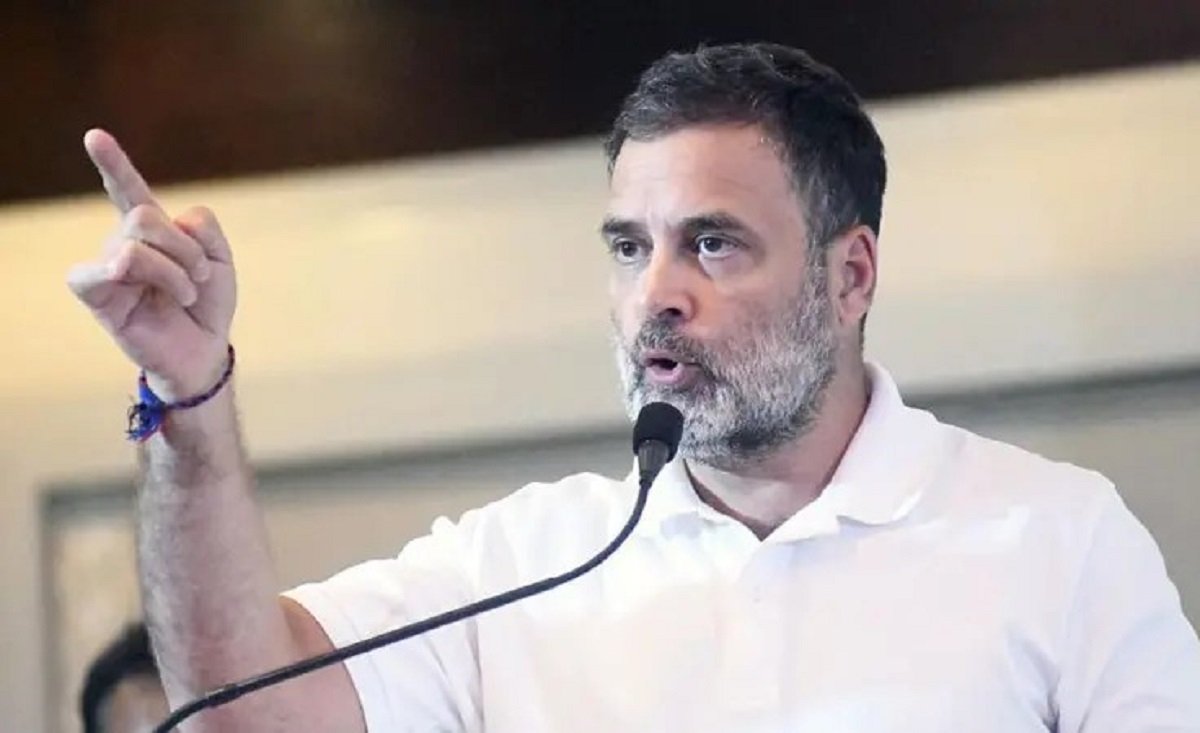
Contents
New Delhi, Oct.16,2025:Modi afraid of Trump, declared Rahul Gandhi in a scathing post on X (formerly Twitter), following Donald Trump’s claim that Prime Minister Narendra Modi had assured him India would stop purchasing Russian oil. Gandhi accused Modi of outsourcing critical decisions to Trump and ignoring repeated slights. The opposition leader’s remarks stirred new controversy in an already heated debate over India’s energy diplomacy and strategic autonomy-
Trump’s announcement on Russian oil
On October 15, 2025, U.S. President Donald Trump stated that PM Modi had given him a personal assurance that India would cease buying oil from Russia. He framed this as a big diplomatic win and a step to apply pressure on Moscow regarding the Ukraine war.
Trump emphasized that the move would not be immediate but would occur “within a short period of time.”
Reuters reported that Trump said, “He assured me today that they will not be buying oil from Russia,” positioning the announcement as part of a broader effort to curb Russia’s energy revenues.
However, the Indian government has not confirmed such an assurance. Critics and analysts immediately questioned whether this claim was part of political posturing.
Rahul Gandhi’s blistering post-5 core accusations
In response, Rahul Gandhi posted-
“Prime Minister Modi is frightened of Trump. He allows Trump to decide and announce that India will not buy Russian oil. He keeps sending congratulatory messages despite repeated snubs.”
He further said Modi had-
- Allowed Trump to make the announcement in his name.
- Continued sending congratulatory messages to Trump despite repeated neglect.
- Cancelled the Finance Minister’s visit to the U.S.
- Skipped attending the climate summit in Sharm el-Sheikh.
- Avoided contradicting Trump on Operation Sindoor. Gandhi also said:
“Modi is outsourcing key decisions to America, his famed ‘56-inch chest’ has shrunk.”
His tone was pointed, bold, and intended to shift the political narrative: rather than debating energy policy, the focus becomes leader inaction and perceived subordination.
India’s official response & strategic posture
In reaction, the government emphasized that energy decisions are guided by India’s own interests, especially those of consumers, not external dictates.
The Ministry of External Affairs stated-
“Our import policies are guided entirely by safeguarding consumer interests in a volatile energy scenario. Ensuring stable prices and supply security are twin goals.”
The government did not explicitly confirm or deny Trump’s reported assurance, choosing rather to lean into strategic ambiguity and highlight India’s history of independent energy policy.
Indian refiners, meanwhile, were reported to be exploring gradual reduction in Russian crude imports under pressure from tariffs imposed by the U.S.
But observers note that rapidly curtailing dependence on Russian oil cannot be done overnight — supply chains, refinery configurations, and alternate sourcing need time.
Energy dynamics, U.S. pressure and Indian autonomy
The U.S. leverage & tariff framing
Earlier in 2025, the Trump administration slapped a 25 % retaliatory tariff on Indian goods, citing India’s continued Russian oil imports. Later, an additional 25 % surcharge was introduced — raising the total to 50 %.
This tariff escalation is widely viewed as a tool to compel India to change its energy sourcing.
Trading analysts say the pressure is real: high tariffs can severely damage India’s export competitiveness.
Russia-India oil trade: deepening ties
Since the Ukraine war, India has sharply increased its buys of discounted Russian crude. Some estimates suggest 30–40 % of India’s oil imports now come from Russia.
Russia and India have also begun negotiating joint ventures to strengthen their energy cooperation.
Indian refineries have gradually adapted to processing heavier and varied crude grades to accommodate Russian oil.
Constraints, risks and strategic sovereignty
Switching away from Russian oil would mean revising contracts, adjusting refinery blends, and paying premiums for alternate crude. These changes risk inflationary pressures.
Import dependence, global price volatility, geopolitics (e.g. Middle East tensions) all constrain India’s freedom to drastically shift overnight.
Hence, while the U.S. pressure is material, India’s strategic calculus balances national interest — energy security, price stability, and autonomy.
Reactions across the political spectrum
- Congress & Opposition: They seized on Gandhi’s framing to challenge Modi’s leadership, arguing the Prime Minister is yielding to foreign demands.
- BJP & ruling camp: Likely to portray this as typical opposition theatrics, and emphasize India makes sovereign decisions.
- Media & analysts: Debate ranges from viewing Trump’s claim as exaggeration to assessing the practical difficulty of halting Russian imports immediately.
- International observers: Many treat Trump’s announcement with caution — noting India has made no formal statement confirming the commitment, and that energy policy shifts take time.
Broader implications for India’s foreign policy
- Strategic autonomy test: India’s response will be closely watched as a measure of whether strategic independence holds under pressure.
- U.S.–India ties: A commitment to curb Russian oil could ease tensions and unlock trade deals, but doing so under duress raises questions about sovereignty.
- Russia partnership: Reducing imports may strain the longstanding India–Russia energy bond, potentially pushing Moscow to seek new partners or leverage.
- Global energy realignments: India’s decision will impact global oil flows, pricing, and the effectiveness of sanctions on Russia.
Will Modi afraid of Trump become a lasting narrative
Rahul Gandhi’s slogan “Modi afraid of Trump” crisply captures his political counterattack against Trump’s claim about Russian oil. Whether it sticks will depend on how India responds — whether it confirms, denies, or acts.
Breaking News
Attorney General Approves Contempt Action Against Lawyer for Attempted Shoe Throw at CJI Gavai-
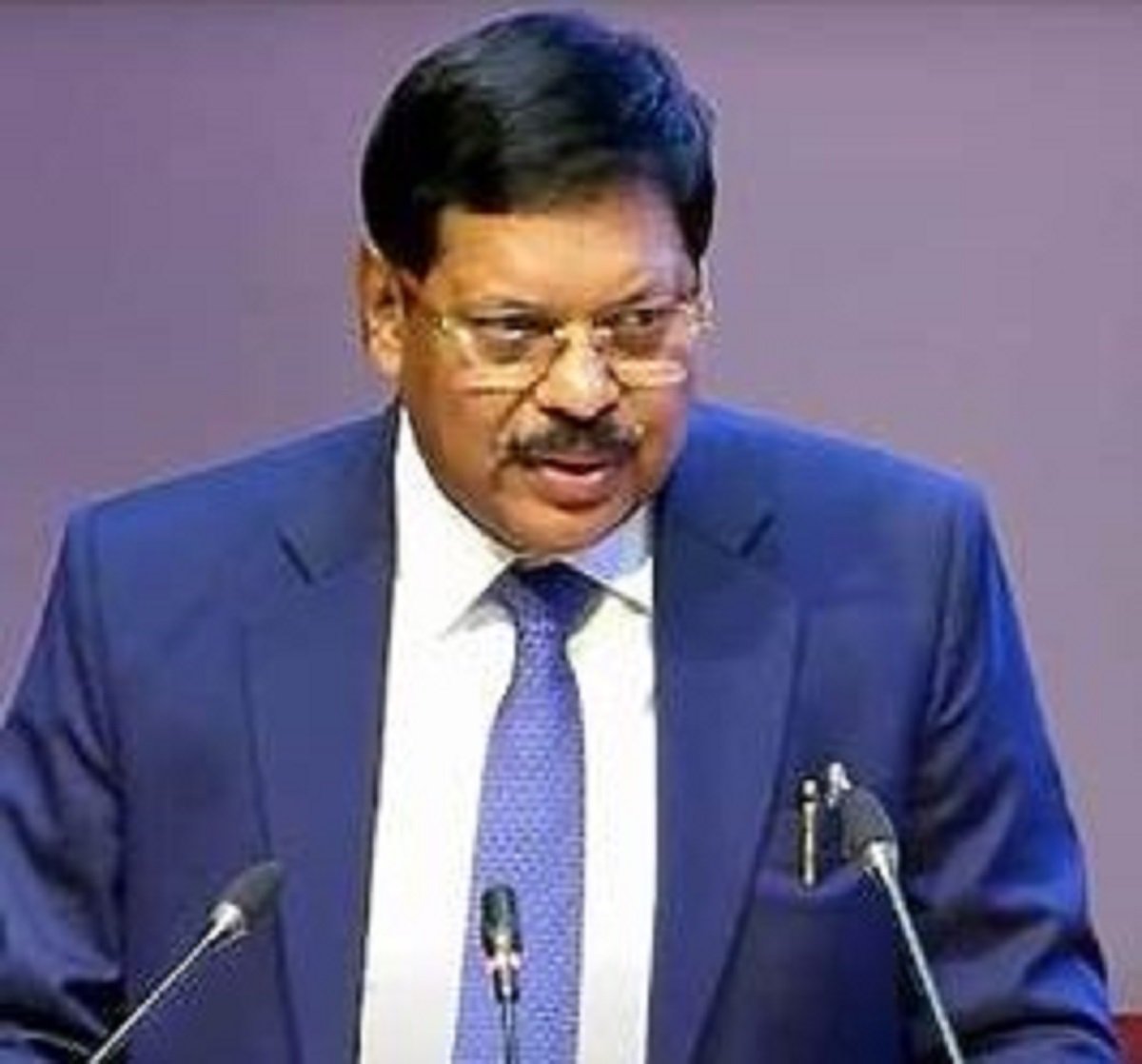
Contents
New Delhi, Oct.16,2025:In a significant development within India’s legal landscape, Attorney General R Venkataramani has granted consent to initiate criminal contempt proceedings against Advocate Rakesh Kishore. This decision follows an incident on October 6, 2025, where Kishore attempted to throw a shoe at Chief Justice of India (CJI) B R Gavai during a Supreme Court hearing. The incident has sparked widespread condemnation and raised concerns about the sanctity of judicial proceedings-
Background of the Incident
The incident occurred during a routine Supreme Court session when Advocate Rakesh Kishore, aged 71, allegedly hurled a shoe towards CJI Gavai. Reports indicate that Kishore shouted, “Sanatan ka apmaan nahi sahenge” (“We will not tolerate disrespect to Sanatan Dharma”) before the act. Security personnel swiftly intervened, and the shoe did not make contact with the bench. CJI Gavai remained composed and directed the court to continue proceedings. The Bar Council of India (BCI) suspended Kishore’s license pending an inquiry, labeling the act as “a blot on the legal fraternity.”
Legal Reactions and Proceedings
Following the incident, Solicitor General Tushar Mehta and Supreme Court Bar Association (SCBA) President Vikas Singh jointly approached the Supreme Court, requesting the initiation of criminal contempt proceedings against Advocate Kishore. On October 16, 2025, the Supreme Court was informed that Attorney General R Venkataramani had granted consent for such proceedings. In his consent letter, the Attorney General described Kishore’s actions as “not only scandalous but also calculated to demean the Supreme Court.”
The Supreme Court bench, led by Justices Surya Kant and Joymalya Bagchi, acknowledged the gravity of the situation. However, they expressed concerns about the potential repercussions of reviving the matter, suggesting it might fuel further social media debates. The bench indicated that the case would be considered after the Diwali break.
Public and Political Reactions
The shoe-throwing incident has elicited strong reactions from various quarters. Karnataka Chief Minister Siddaramaiah condemned the act, linking it to ideological influences by mentioning that the accused was a “person belonging to Sanatan Dharm.” Following the episode, an FIR was filed against the lawyer in Mysuru.
Union Minister Ramdas Athawale also expressed his disapproval, suggesting that the attack occurred due to CJI Gavai’s Dalit background. He called for action under the Scheduled Castes and Scheduled Tribes (Prevention of Atrocities) Act.
On the other hand, Advocate Rakesh Kishore has maintained that his actions were not caste-motivated. He stated, “Can someone tell my caste? Maybe I am a Dalit too,” and offered to provide his caste certificate to prove his background.
The Attorney General’s consent to initiate contempt proceedings against Advocate Rakesh Kishore underscores the seriousness with which the Indian legal system views any attempt to undermine its authority. As the Supreme Court prepares to hear the case post-Diwali, the incident serves as a stark reminder of the importance of maintaining decorum and respect within judicial proceedings. The legal community and the public await the Court’s decision, which will likely set a precedent for handling similar incidents in the future.
Breaking News
Gauhati High Court Quashes Lower Court’s Order in Rahul Gandhi Defamation Case-
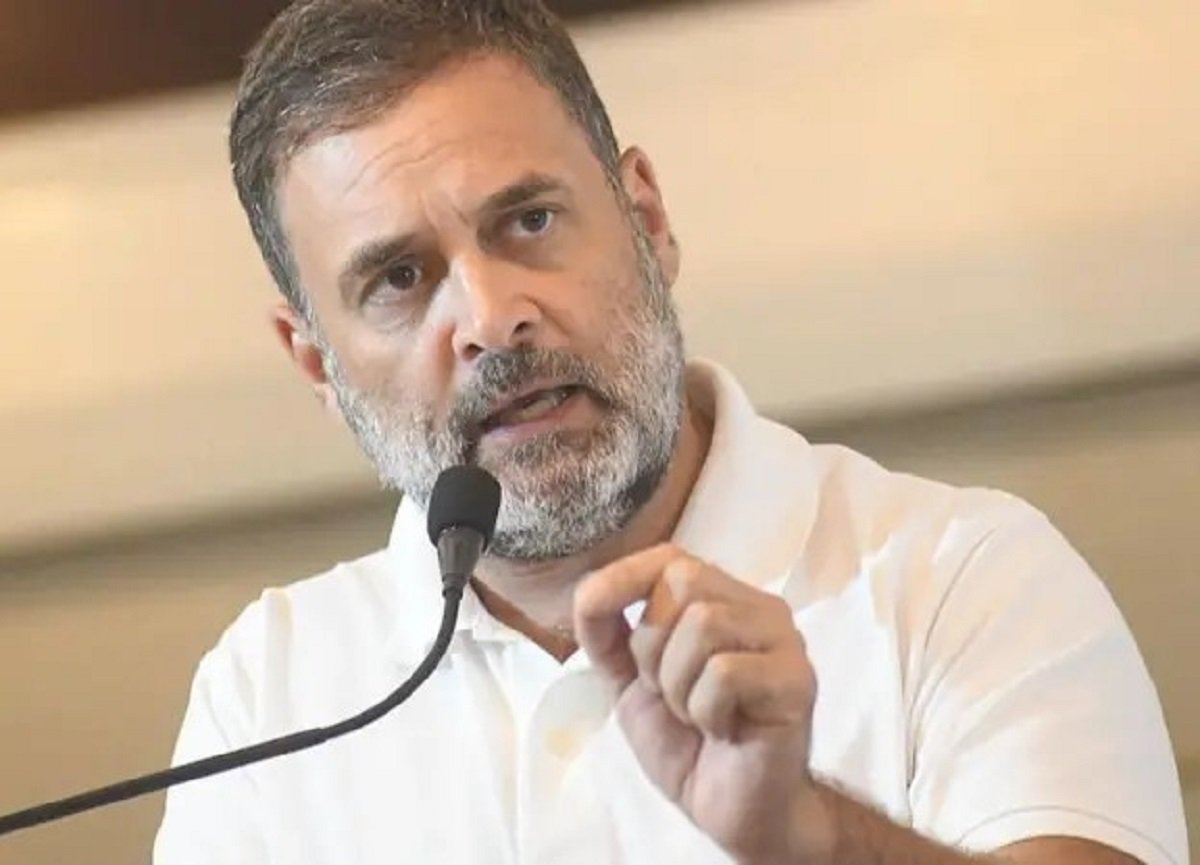
Contents
Gauhati, Oct.16,2025:In a significant legal development, the Gauhati High Court has provided a major relief to Congress leader Rahul Gandhi by quashing a lower court’s order that allowed additional witnesses in a long-standing defamation case. This decision has garnered widespread attention and has implications for the legal proceedings against Gandhi.
Background of the Defamation Case
The defamation case against Rahul Gandhi dates back to 2016 when RSS worker Anjan Kumar Bora filed a criminal defamation petition. The case stemmed from remarks made by Gandhi during his visit to Barpeta Satra in Assam, where he alleged that RSS workers had prevented him from entering the monastery. The trial court had recorded statements from six witnesses, and in March 2023, the magistrate had declined to allow additional witnesses. However, the additional sessions judge later permitted the inclusion of new witnesses, prompting Gandhi’s legal team to challenge this decision in the Gauhati High Court.
Gauhati High Court’s Recent Ruling
On October 13, 2025, Justice Arun Dev Choudhury of the Gauhati High Court heard the criminal revision petition filed by Gandhi’s legal team. The court found that the application for additional witnesses was vague and lacked specific details, leading to the magistrate’s original decision being upheld. Justice Choudhury criticized the lower court’s intervention, stating that it had “mechanically interfered” with the reasoned order of the magistrate. Furthermore, the High Court directed the trial court to expedite the proceedings, considering Gandhi’s status as a sitting Member of Parliament. This ruling effectively limits the scope of additional evidence in the ongoing defamation case.
Legal Implications of the Decision
The Gauhati High Court’s decision underscores the importance of adhering to procedural norms in legal proceedings. By quashing the lower court’s order, the High Court has reinforced the principle that applications for additional witnesses must be substantiated with clear and specific details. This ruling may set a precedent for similar cases, emphasizing the need for transparency and specificity in legal applications.
Public and Political Reactions
The High Court’s decision has elicited varied reactions from the public and political circles. Supporters of Rahul Gandhi view the ruling as a vindication of his stance, interpreting it as a check on the misuse of legal provisions. Opponents, however, may perceive it as a setback in their efforts to hold public figures accountable. The case continues to be a topic of discussion, reflecting the intersection of law and politics in contemporary India.
The Gauhati High Court’s ruling in the defamation case against Rahul Gandhi marks a significant development in the legal landscape. By quashing the lower court’s order allowing additional witnesses, the High Court has emphasized the need for specificity and clarity in legal applications. As the case proceeds, it will likely continue to influence discussions on the balance between legal procedures and political accountability.
Breaking News
Green Crackers verdict sparks hope- Supreme Court permits limited Diwali bursting in Delhi-NCR—
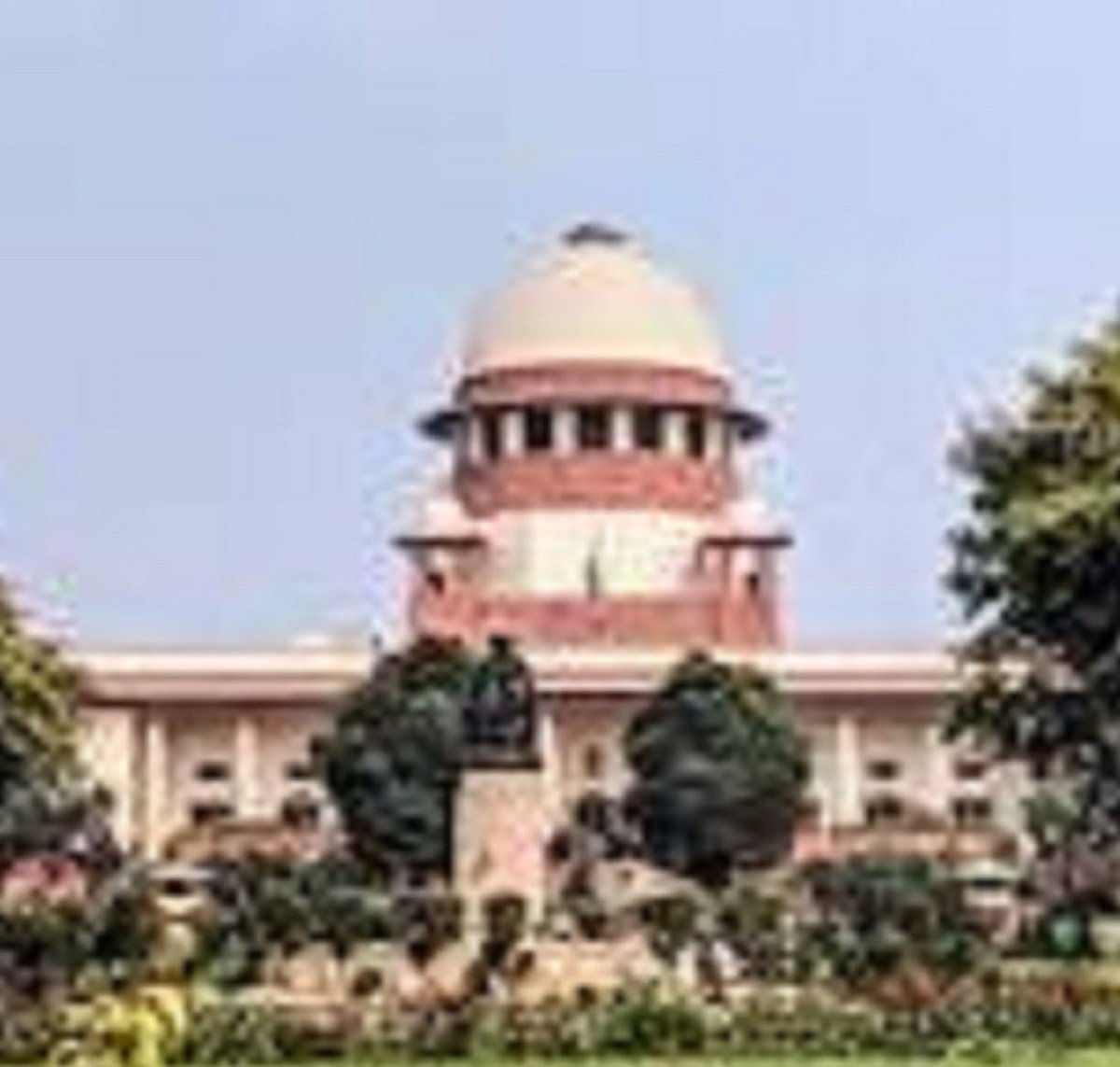
Contents
New Delhi, Oct.15,2025:Green Crackers verdict refers to the Supreme Court’s ruling that allows the bursting and sale of green firecrackers in Delhi-NCR for Diwali 2025, subject to strict conditions-
Previously, Delhi and NCR had effectively experienced bans on any firecracker usage, owing to concerns over worsening air quality. Under the new ruling, for the first time in years, limited celebration with green crackers has been permitted.
The verdict does not restore full freedom; rather, it imposes a temporary, experiment-based relaxation in a controlled environment.
Timeline & Key Mandates
Permitted Days and Hours
Under the Green Crackers verdict, the Supreme Court has allowed bursting of green crackers only on October 18 to October 21, 2025.
The only time windows allowed are-
- 6:00 AM – 7:00 AM
- 8:00 PM – 10:00 PM
These time windows are strictly enforced to minimize air quality impact.
QR Codes, Designated Sales & Traceability
To prevent illegal crackers from being sold, each green cracker must carry a QR code that can be verified against a public registry.
Sales will only be allowed at designated offline outlets, licensed by authorities based on NEERI / PESO approvals. Patrol teams will monitor these outlets and conduct random inspections of stock and authenticity.
If a vendor or manufacturer deals in non-compliant crackers, their license may be suspended immediately.
E-commerce Ban & Supply Chain Controls
The Supreme Court has prohibited online sales of firecrackers (even green ones) in NCR via platforms like Amazon or Flipkart.
Also, crackers imported from outside the NCR are banned for sale within NCR to prevent cross-border smuggling
Arguments & Rationale from the Court
Smuggling & Illicit Crackers
One of the key reasons the court advanced to justify this controlled relaxation is that conventional, unregulated firecrackers are often smuggled into NCR and sold illegally. Such illicit crackers may lack safety or emissions standards, thus causing more harm than certified green crackers.
The court opined that a complete ban might encourage a black market that undermines both air quality and governance.
Pollution & Constitutional Mandate
India’s Constitution under Article 21 guarantees the right to life, which courts have interpreted to include the right to a healthy environment. The bench reiterated that environmental protection cannot be compromised.
Yet, the court also recognized the cultural sentiment around Diwali and the livelihoods associated with the fireworks industry. Thus, it opted for a “balanced approach” rather than an outright prohibition.
Industry & Livelihood Concerns
The fireworks trade employs many people, including small manufacturers and local vendors. The court considered submissions from the industry and noted that an absolute ban would significantly affect livelihoods.
The bench believed that allowing green crackers temporarily would permit continued economic activity under regulated conditions.
Critical Reactions & Expert Views
Environmentalists’ Warnings
While green crackers emit lower emissions (claimed reductions of 30-35 %) compared to conventional crackers, experts caution that they still release ultrafine particles (PM1) and gases harmful to health.
Many environmental activists argue that relaxing bans—even for a few days—could jeopardize years of advocacy to improve Delhi’s air during winters.
They also demand strong enforcement to ensure only NEERI-approved crackers reach consumers, and strict penalties for violations.
Fireworks Industry Perspective
Manufacturers and fireworks associations have welcomed the Green Crackers verdict, as it offers breathing space for business after multiple years of strict bans.
They emphasize that they adhere to NEERI / PESO protocols and claim they are prepared to comply with the QR and licensing norms mandated by the court.
Public Sentiment
Among Delhi-NCR residents, opinions are mixed. Some grassroots voices rejoice that Diwali celebrations can resume in a limited way. Others remain skeptical, fearing more pollution and disregard for rules.
In densely populated areas, even during allowed slots, bursting crackers may aggravate breathing issues, especially for vulnerable populations (children, asthma patients).
Risks, Loopholes & Enforcement Challenges
Even the carefully drafted Green Crackers verdict has potential pitfalls-
- Counterfeit or fake “green” crackers may slip into markets disguised under QR labels.
- Monitoring dozens of designated outlets across NCR is a logistical challenge.
- Smuggling from adjacent districts remains a threat.
- Verifying QR codes in real time and responding to violations promptly will test enforcement machinery.
- Air quality fluctuations may depend more on weather, vehicular emissions, and agricultural burning than just crackers.
Unless the authorities maintain round-the-clock vigilance, the benefits of this verdict may be diluted.
Past Judgments & Pollution Trends
The concept of green firecrackers dates back to the Arjun Gopal vs. Union of India judgement (2018), which first permitted eco-friendlier crackers under supervision.
Over the years, Delhi has witnessed severe post-Diwali air spikes, with PM2.5 levels crossing hazardous thresholds.
Some past efforts showed modest improvements—but critics claim that even green crackers resulted in pollution surges in windless or inversion-prone conditions.
Thus, the Green Crackers verdict can be seen as a cautious experimentation in controlled relaxation.
What Happens Next & Monitoring
- The Central Pollution Control Board (CPCB) and State Pollution Control Boards (SPCBs) are mandated to monitor air quality from October 14 to 21 and submit reports.
- The court may revisit the policy based on data and decide whether to extend or curtail the relaxation in subsequent years.
- Violators – whether manufacturers or sellers – face immediate action including license suspension.
- Public awareness campaigns will likely accompany the rollout to ensure compliance.
The Green Crackers verdict marks a significant shift in the regulatory approach toward firecrackers in Delhi and NCR. It reflects an attempt to combine festive ethos with environmental responsibility. The strict conditions—QR codes, limited timing, official oversight—aim to prevent misuse and smuggling.
Breaking News
Discover the best Vastu-approved colors for your home this Diwali-
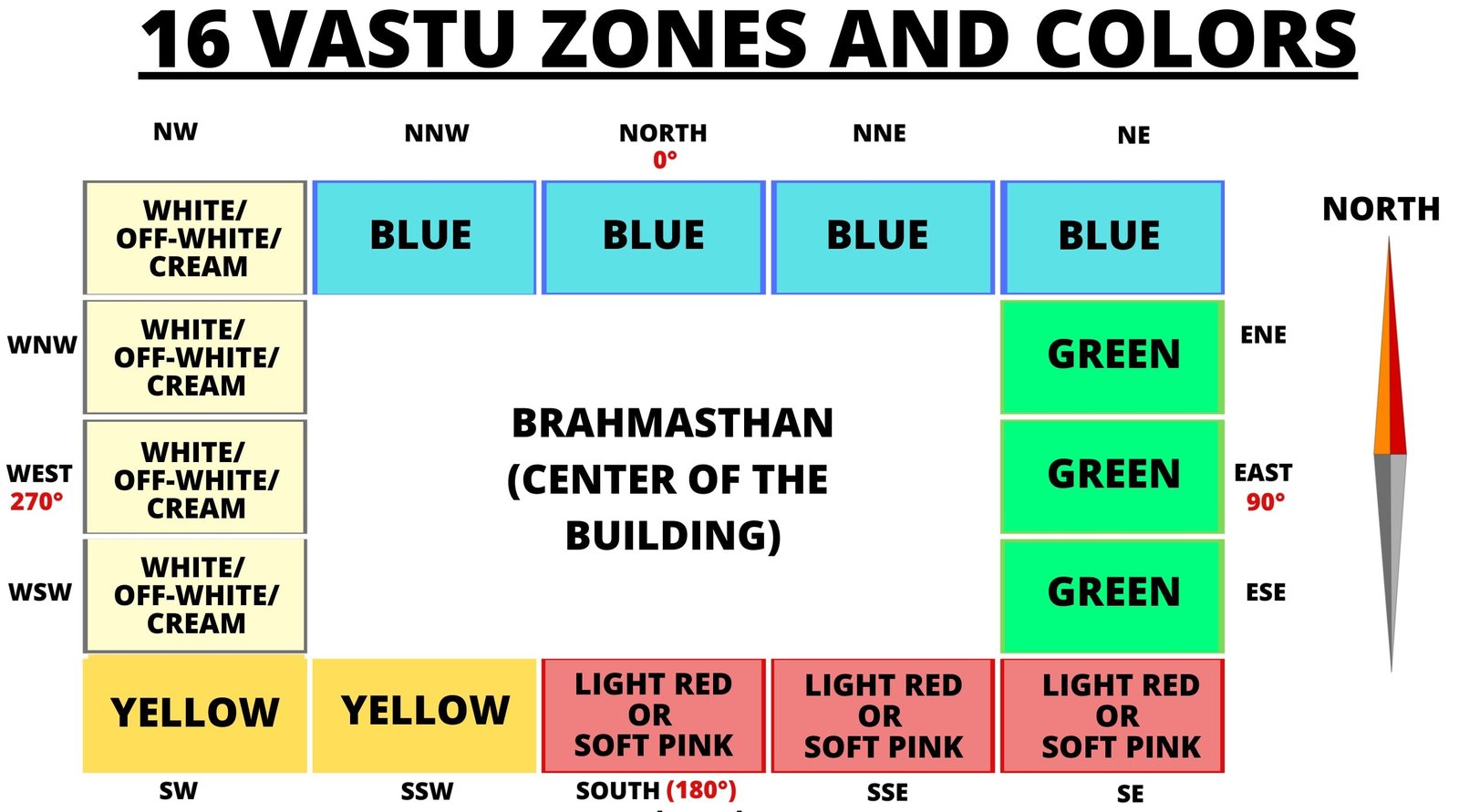
Contents
New Delhi,Oct.14,2025:Diwali, the festival of lights, is not just a celebration of victory over darkness but also an opportunity to invite positivity and prosperity into our homes. According to Vastu Shastra, the ancient Indian science of architecture, the colours used in home decor play a significant role in influencing the energy and harmony of a space. This Diwali, aligning your home’s paint colours with Vastu principles can enhance the festive spirit and attract good fortune-
Significance of Vastu in Diwali Home Decor
Vastu Shastra emphasizes the importance of directions and elements in creating a balanced and harmonious living environment. Each direction is associated with specific elements and deities, and choosing the right colours for each direction can amplify positive energy and mitigate negative influences. By adhering to these guidelines, you can ensure that your home is in harmony with cosmic energies, promoting health, wealth, and happiness.
Recommended Colours for Each Direction
East Direction
- Colour: White, Light Yellow, or Green
- Significance: The East is associated with the rising sun and symbolizes new beginnings and vitality. Light colours like white and yellow promote clarity and optimism, while green enhances growth and harmony. These colours are ideal for living rooms or dining areas, fostering a welcoming and vibrant atmosphere.
South-East Direction
- Colour: Red, Orange, or Peach
- Significance: This direction governs the fire element and is linked to energy, productivity, and finances. Vibrant colours like red and orange stimulate enthusiasm and wealth, making them suitable for kitchens or workspaces. Avoid dark shades in this area to prevent dampening motivation. South Direction
- Colour: Maroon, Pink, or Coral
- Significance: The South represents recognition, reputation, and achievements. Energizing colours like maroon and pink enhance confidence and warmth, ideal for living rooms or study areas. These tones promote a sense of accomplishment and social harmony.
South-West Direction
- Colour: Earthy Tones like Beige, Cream, or Light Brown
- Significance: This direction influences stability, relationships, and security. Earthy colours promote comfort and harmony, making them suitable for bedrooms or meditation spaces. These shades foster emotional balance and tranquillity. West Direction
- Colour: White, Silver, or Light Grey
- Significance: The West nurtures contentment and relaxation. Calming shades like white and silver bring peace and balance, ideal for bedrooms or study spaces. These tones create a serene environment conducive to rest and reflection.
- North-West Direction
- Colour: Soft Grey or White
- Significance: This direction is governed by the element of air and is linked to supportive relationships, stability, and helpful connections. Using soft grey or white shades creates a balanced and peaceful environment, suitable for guest rooms or living areas.
North Direction
- Colour: Cool Tones like White, Silver, Soft Blue, Aqua, or Teal
- Significance: The North is associated with growth and communication. Cool tones promote calmness and clarity, supporting professional progress and smooth conversations. These colours are ideal for offices or study areas.
North-East Direction
- Colour: Light Soothing Colours like White, Cream, Light Blue, or Purple
- Significance: Known as the most spiritual area, this corner is ideal for worship and meditation. Light colours bring peace and clarity, enhancing spiritual practices. Avoid dark shades to maintain tranquillity.
Colours to Avoid During Diwali
While selecting colours for your home, it’s essential to avoid certain hues that may bring negative energy-
- Black or Dark Grey: These colours absorb light and can block positive energy flow, making them unsuitable for entrances or living spaces.
- Deep Red: While red is auspicious in moderation, deep red can be overwhelming and may cause restlessness or anxiety.
Breaking News
Gold prices in India have surpassed ₹1.3 lakh per 10 grams- Explore the factors driving this surge-

Contents
New Delhi,Oct.14,2025:Gold prices in India have recently surpassed ₹1.3 lakh per 10 grams, marking a significant milestone in the precious metals market. This surge has left investors and consumers alike pondering the reasons behind this unprecedented rise and whether the upward trend will continue-
Understanding Gold ETFs
Gold Exchange-Traded Funds (ETFs) are investment instruments that track the price of gold. Each unit of a gold ETF represents a specific quantity of gold, typically one gram. They offer investors a way to invest in gold without the need to physically own it. Gold ETFs are traded on stock exchanges, providing liquidity and ease of access.
Record Inflows into Gold ETFs
In September 2025, gold ETFs witnessed record inflows globally, with a total of $26 billion invested during the quarter. North American investors led the charge, contributing $16.1 billion, while European funds added $8.2 billion. In India, gold ETFs saw inflows of approximately ₹8,363 crore during the same period, a significant increase from previous months.
Central Banks’ Gold Buying Spree
Central banks worldwide have been increasing their gold reserves, contributing to the upward pressure on gold prices. In August 2025, central banks collectively purchased 15 tonnes of gold, with countries like Kazakhstan, Bulgaria, and El Salvador leading the pack. India, China, and Qatar have also been active in expanding their gold reserves.
Factors Influencing Gold Prices
Several factors have contributed to the recent surge in gold prices-
- Geopolitical Tensions: Ongoing conflicts and trade tensions, particularly between the U.S. and China, have driven investors towards safe-haven assets like gold.
- U.S. Federal Reserve Policies: Expectations of interest rate cuts by the U.S. Federal Reserve have weakened the U.S. dollar, making gold more attractive to investors.
- Economic Uncertainty: Global economic uncertainties, including concerns over inflation and recession, have led investors to seek stability in gold investments.
Gold Price Forecasts for 2026
Analysts are bullish on gold’s future prospects. Bank of America has raised its gold price forecast to $5,000 per ounce by 2026, citing strong investment demand and economic uncertainties. Similarly, Goldman Sachs has increased its December 2026 gold price forecast to $4,900 per ounce.
Investment Strategies in Gold
For investors looking to capitalize on the rising gold prices, several options are available-
- Gold ETFs: As discussed, gold ETFs offer a convenient way to invest in gold without the need for physical storage.
- Sovereign Gold Bonds: Issued by the government, these bonds offer a fixed interest rate along with capital appreciation linked to gold prices.
- Gold Mutual Funds: These funds invest in gold mining companies and gold-related assets, providing exposure to the gold sector.
Is Gold Still a Safe Bet
While gold has shown impressive gains, potential investors should consider the associated risks, including market volatility and geopolitical factors. Diversifying one’s investment portfolio and consulting with financial advisors can help mitigate these risks. Given the current economic climate and expert forecasts, gold remains a viable option for those seeking to hedge against uncertainties.
Breaking News
Mental health crisis in India youth with new data- from soaring anxiety & depression to the hidden pressure of social media-
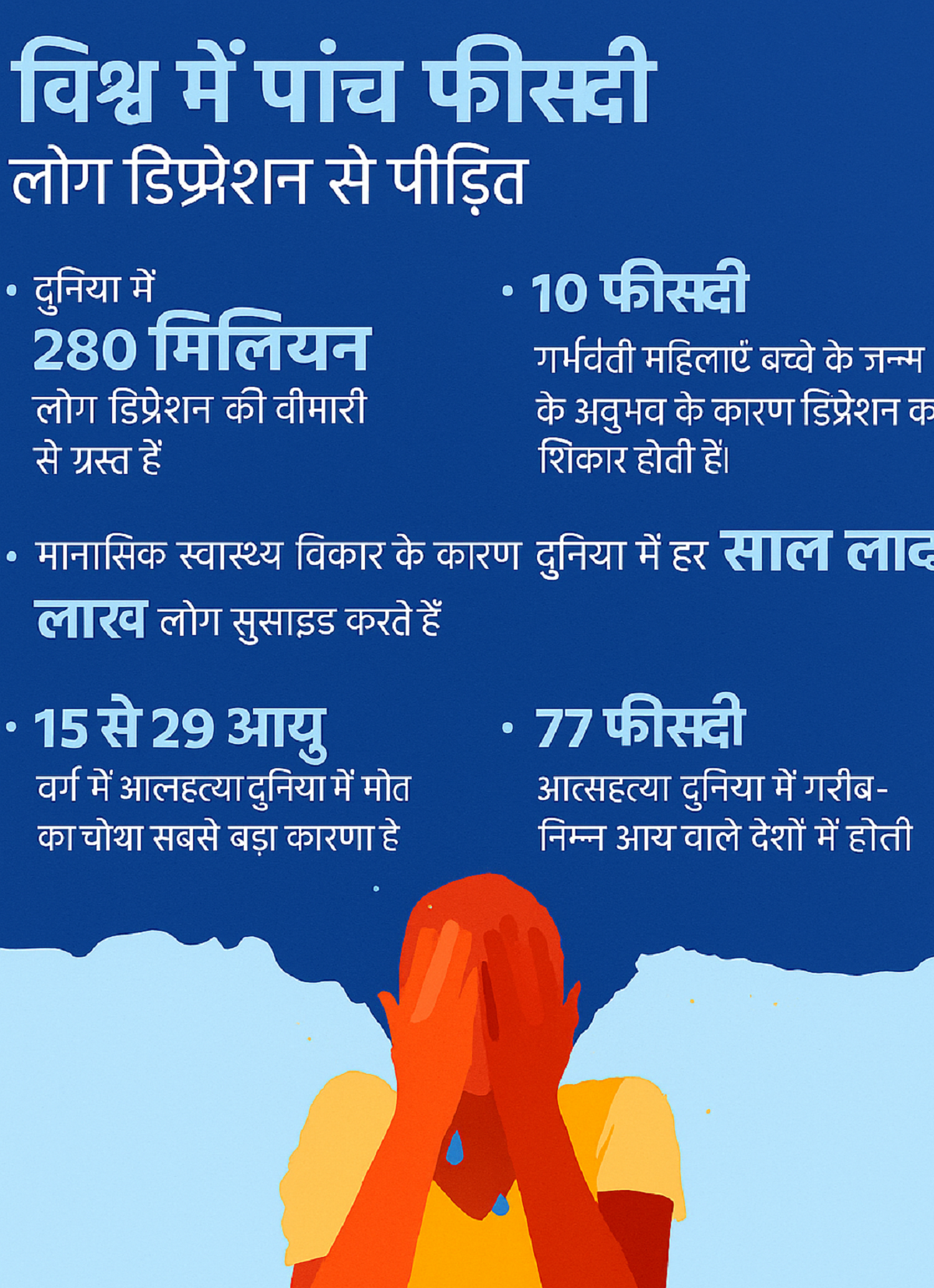
Contents
New Delhi, Oct.14,2025:Mental health crisis in India youth is no longer a whisper from the fringes—it has become a loud alarm that demands attention. Across urban and rural regions, among students and young professionals, anxiety, depression, emotional distress, and suicidal thoughts are rising sharply. This article unpacks the data, digs into the causes, and highlights what can be done before the crisis deepens further-
Alarming statistics- how widespread is the issue
Study in Tier-1 cities
A recent study conducted by SRM University AP, Amaravati, published in the Asian Journal of Psychiatry, surveyed 1,628 students (aged 18–29) across eight major Indian cities (Delhi, Mumbai, Bengaluru, Chennai, Hyderabad, Pune, Ahmedabad, Kolkata). Findings include:
- Nearly 70% of students reported moderate to high anxiety.
- About 60% showed signs of depression.
- Over 70% felt emotionally distressed.
- 65% struggled to regulate behaviour or emotions.
Other relevant data
- Among adolescents in Telangana and Karnataka (ages 10-18), over 60% reported sleep difficulties; 70% reported problems focusing in class.
- In India’s workforce and academic settings, nearly 75% of high school students sleep fewer than 7 hours due to late-night social media use; many feel career uncertainty.
- UNICEF reports indicate only 41% of young people in India believe it’s good to seek help for mental health problems, compared to ~83% in many other countries.
- Treatment gap and professional shortage
- India has about 0.75 psychiatrists per 100,000 people, far below WHO recommendations.
- Treatment gap for mental disorders is estimated between 70% to 92%, depending on region and disorder.
These numbers show that mental health crisis in India youth is wide, serious, and multi-dimensional.
Case studies- when social media becomes a trigger
While data gives scale, real stories show the human toll. They mirror many of the trends uncovered by recent studies and add urgency to the need for prevention.
- Case 1: In Raipur (Chhattisgarh), a 22-year-old man who made reels and videos felt despair when his recent posts didn’t get many views. He increasingly isolated himself and one day injured himself via cutting his wrist. Family intervened just in time and got medical help.
- Case 2: In Bhopal, a 23-year-old woman preparing for competitive exams felt immense pressure, loneliness, and repeated failures. She attempted suicide when she felt she had no outlet—this, despite being academically good. Intervention came in time, with help from family and mental health professionals.
These stories underline how external validation (likes, views, status), social isolation, peer comparison, and academic pressure can interact with vulnerabilities, causing crises.
pressure, lifestyle, pandemic impact
Academic, peer & social media pressure
Students cite overwhelming competition, expected academic success, job prospects, etc. Social media amplifies peer pressure: lifestyle comparisons, social status, likes/views become measures of self-worth. Studies show high social media usage correlates with anxiety, sleep issues, and emotional distress.
Lifestyle changes and lack of physical activity
In many cases, children and young adults have decreased physical activity, increased screen time, poor sleep habits, and irregular routines. These contribute to emotional instability, mood disorders, and even physical health issues. This is in line with child psychiatry experts’ observations. (Your original cases about media, gaming addiction, lack of physical activity illustrate this.)
Pandemic after-effects and isolation
COVID-19 lockdowns, disruptions in schooling / college, increased remote/online interactions have caused prolonged isolation. Reports show that youth aged 18-24 were among the worst affected in their mental health scores post-pandemic.
Lack of early support, stigma & awareness
Although awareness has increased, many young people do not recognize early signs. Many are reluctant to seek help due to fear of being judged or due to lack of access. UNICEF data shows low rates of belief in seeking mental health support in India relative to other countries.
physical and psychological links
The mental health crisis in India youth doesn’t only affect emotions—it has broader health and social consequences.
- Physical health risks: Conditions like hypertension, diabetes, heart disease are rising in tandem with mental stress. Stress hormones affect sleep, diet, and bodily systems. In your source data, psychiatric experts note links between mental distress and these physical disorders.
- Emotional regulation & behaviour problems: Youth may have difficulty managing mood, behaviour, impulsivity. Increased substance use, self-harm, or suicidal ideation may follow, especially when pressure or rejection (e.g. from social media) is perceived.
- Academic, social, relational impact: Decline in performance, drop in self-esteem, withdrawal from friends/family, breakdowns in relationships. As in the cases you describe.
- Long-term risk: Early mental health conditions often predict recurrent problems, even in later adulthood. Unaddressed depression or anxiety may lead to chronic illness, lower life satisfaction.
studies, support systems, campaigners
University & survey reports
- The SRM University AP study (1,628 students) as mentioned above.
- Studies on adolescent girls’ mental health, including awareness programmes in remote or rural areas (e.g. Assam, Telangana).
Helplines & tele-mental health
- Tele-MANAS in Karnataka has received over 65,000 calls since its launch in 2022, supporting young people in crises.
- New mental health helpdesk for medical students in Telangana (T-JUDA) to offer peer support, counselling.
Government & policy efforts
- Economic Survey 2024-25 underscores need for preventive mental health education, digital services, workplace policies.
- UNICEF’s “Mental Well-being for Young People” approach that emphasizes integrated services, early detection, reducing stigma.
Community, grassroots action
- Peer-led programmes, student support groups, awareness in schools.
- Workshops and community health clinics in tribal or rural areas improving access (e.g. Gadchiroli study).
What needs to change-solutions and early interventions
To address the mental health crisis in India youth, multiple coordinated steps are essential:
Early identification & screening
- Integrate mental health screening in schools, colleges. Trained counsellors should observe signs: sleep problems, withdrawn behaviour, changes in mood or performance.
- Use validated tools, possibly AI/technology-assisted where feasible, especially after the rise in digital mental health studies.
Awareness & destigmatization
- Reduce shame attached to mental illness. Public campaigns, peer testimonials, role models speaking out.
- Educate parents, teachers, employers about what mental illness may look like, that it can be treated, and help exists.
Improve access to professional care
- Increase number of psychiatrists, psychologists, psychiatric social workers. WHO recommendation is higher than current ratio.
- Enhance tele-mental health services: helplines like Tele-MANAS, online counselling.
Support systems in institutions
- Schools and colleges should have counselling centres, peer support cells. Emotional support should be part of curriculum.
- Employers should build policies allowing mental health days, wellbeing programs, reduce burnout.
Healthy lifestyle & digital balance
- Promote physical activity, sleep hygiene, limits on screen time.
- Teach young people digital literacy: how social media works, how comparison and algorithms can amplify distress.
turning awareness into action
The mental health crisis in India youth is a reality. It’s visible in statistics, in heartbreaking case studies, and in every city and rural area where young people suffer in silence. But there is also hope. Awareness is rising. Institutions, researchers, policy makers, and community actors are stepping in.
Breaking News
India Taliban Relations 2025 How New Delhi’s Bold Diplomatic Shift Could Redefine South Asia’s Power Balance-
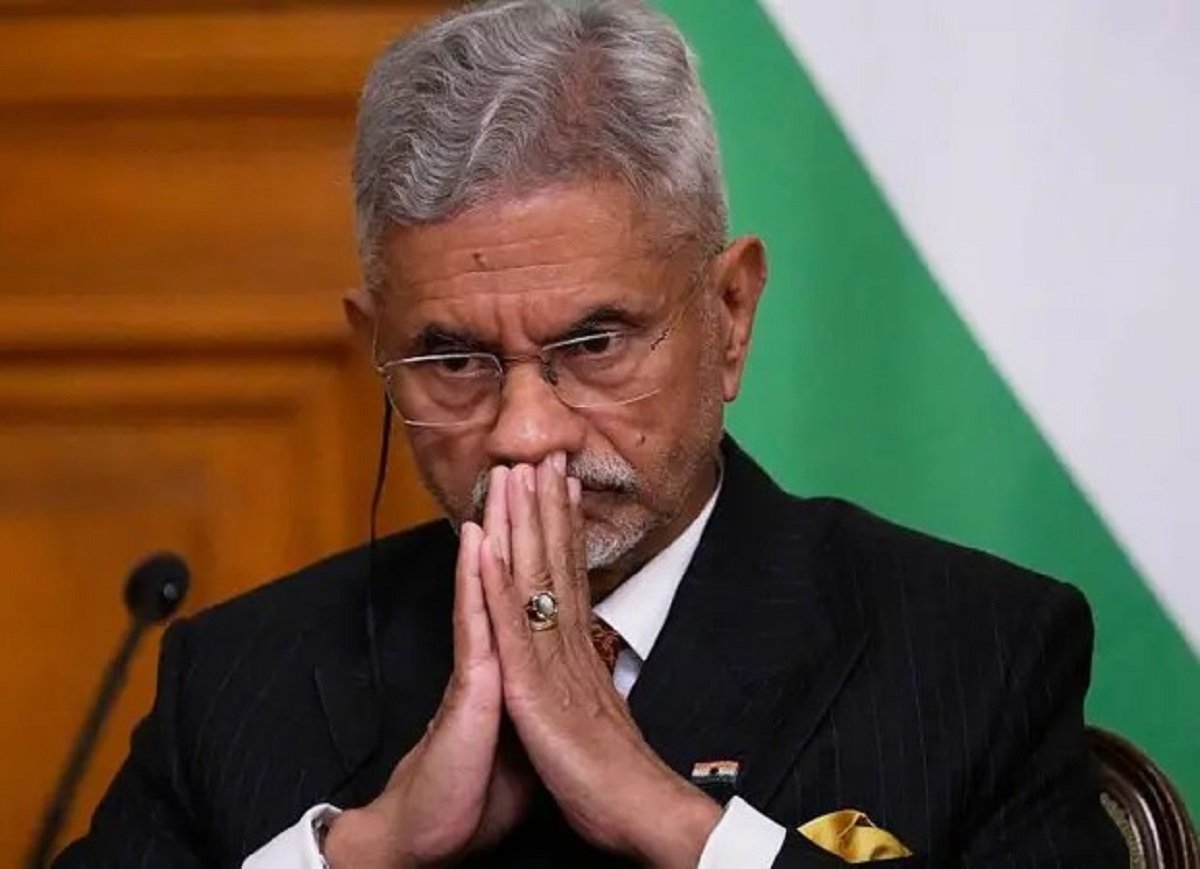
Contents
New Delhi, Oct.11,2025:India Taliban Relations have entered a new and complex phase in 2025 as New Delhi opens high-level talks with the Taliban regime for the first time since the group’s return to power in Kabul in August 2021. The visit of Afghanistan’s acting Foreign Minister Amir Khan Muttaqi to New Delhi marks a significant shift in India’s foreign policy approach — one that blends realism, strategy, and necessity-
While India had previously maintained a cautious distance from the Taliban, the recent engagement reflects a pragmatic shift in its diplomacy, aimed at safeguarding its long-term interests in Afghanistan and maintaining influence in a rapidly evolving regional order.
Taliban Foreign Minister in New Delhi
On Friday, Taliban’s acting Foreign Minister Amir Khan Muttaqi, a figure listed under the United Nations Security Council’s sanctions list, arrived in New Delhi for a series of high-level meetings with External Affairs Minister S. Jaishankar and National Security Advisor Ajit Doval.
This is the first official visit by a Taliban minister to India since the group’s 2021 takeover. During the meeting, Jaishankar announced India’s decision to upgrade its “technical mission” in Kabul to a full-fledged embassy, signaling a gradual restoration of diplomatic presence that was suspended after the fall of the Ashraf Ghani government.
India has not formally recognized the Taliban regime — much like most of the international community — yet the optics of the meeting demonstrate a new phase of cautious engagement. Only Russia has officially recognized the Taliban so far.
Why India Is Engaging the Taliban Now
China established diplomatic channels with the Taliban immediately after the 2021 takeover, but India waited four years before making its move. Analysts say the timing of this renewed contact is strategic.
According to Dr. Anuradha Chenoy, former Dean of the School of International Studies at JNU, “Inviting Amir Khan Muttaqi is a wise decision by India. Ignoring the Taliban could increase instability in South Asia, especially with tensions between Pakistan and Afghanistan intensifying.”
India’s renewed engagement aims to ensure that Afghanistan’s territory is not used for anti-India terrorism, while also creating space for economic and strategic cooperation that benefits both sides.
Counterterrorism and Regional Stability
A key element driving India Taliban Relations is their shared interest in combating terrorism. The Taliban regime sees the Islamic State-Khorasan (ISIS-K) as a direct threat to Afghanistan’s stability, while India remains deeply concerned about terrorism emanating from the region.
India has consistently raised its voice at international platforms against terrorism, and the Taliban, eager to gain legitimacy, has shown readiness to cooperate against ISIS-K. This convergence forms the backbone of their evolving diplomatic engagement.
Both sides agree on ensuring that Afghanistan’s soil will not be used against Indian interests, a concern that had dominated India’s policy decisions during the U.S. withdrawal and after.
China and Pakistan
India’s outreach to the Taliban also reflects broader regional calculations. China’s Belt and Road Initiative (BRI) is expanding into Afghanistan, while Pakistan’s influence over the Taliban has historically been strong.
However, recent years have seen a rift between Islamabad and Kabul, with Pakistan conducting air strikes in Afghan territory — an act the Taliban condemned.
Strategic expert Brahma Chellaney described Muttaqi’s visit as “a setback for Pakistan” and “a turning point in India Taliban Relations,” signaling New Delhi’s intent to regain strategic space in Afghanistan.
India aims to prevent Afghanistan from becoming an exclusive Chinese or Pakistani sphere of influence, while the Taliban, seeking alternative partners, views India as a counterbalance to overdependence on Islamabad or Beijing.
Voices of Support and Skepticism
While many foreign policy experts welcome India’s move, not everyone is pleased. Afghan journalist Habib Khan expressed disappointment, writing on X (formerly Twitter):
“As an Afghan, I admire India’s contributions — the Salma Dam, Parliament, and roads — but normalizing ties with the Taliban feels like betrayal. They seized our country by force and suppressed women’s rights.”
Khan’s statement captures a widespread sentiment among Afghans who view the Taliban as an illegitimate regime. For India, balancing moral diplomacy and strategic realism remains a delicate act.
Economic and Cultural Links That Bind India and Afghanistan
For decades, India and Afghanistan have shared deep cultural, historical, and developmental ties. Before 2021, India invested over $3 billion in Afghanistan’s infrastructure — constructing the Afghan Parliament building, Salma Dam, Zaranj-Delaram Highway, and several hospitals and schools.
Even after the Taliban takeover, India continued to send humanitarian aid, including wheat, medicines, and COVID-19 vaccines.
“Afghanistan has always been a close friend of India, historically and culturally. Even Taliban officials respect India’s contributions. Governments may change, but the people-to-people bond remains strong.”
He also noted that Taliban representatives have assured India that no anti-India activities will be allowed from Afghan soil, emphasizing a new level of trust not seen during the 1990s.
Challenges in India Taliban Relations
Despite progress, several major challenges persist.
- India has not officially recognized the Taliban government, maintaining a cautious balance between dialogue and diplomatic restraint.
- Human rights violations, restrictions on women’s education, and lack of an inclusive political structure continue to raise ethical and global concerns.
- Excessive proximity to the Taliban could invite international criticism from Western nations wary of legitimizing the group.
Dr. Chenoy highlights this dilemma-
“India won’t suddenly recognize the Taliban, but it also can’t ignore them. Engagement is the only way to influence outcomes.”
The Hindu’s Diplomatic Affairs Editor Suhasini Haidar raised a provocative question:
“If India reopens its embassy in Kabul, will it accept a Taliban-appointed envoy in New Delhi? Will the black-and-white Taliban flag replace Afghanistan’s tricolor at the embassy?”
These symbolic but critical questions underline the uncertainty surrounding the next phase of India Taliban Relations.
Expert Opinions on the Diplomatic Rebalance
Analysts across think tanks view India’s latest move as a calculated diplomatic gamble.
Michael Kugelman, South Asia Director at the Wilson Centre, observed:
“India’s outreach shows flexibility and pragmatism. It allows New Delhi to protect its interests in Afghanistan while taking advantage of growing tensions between Pakistan and the Taliban.”
Harsh V. Pant from the Observer Research Foundation (ORF) echoed similar sentiments, suggesting that the Taliban’s estrangement from Pakistan gives India an opportunity to re-establish influence.
“Afghanistan is asserting independence from Pakistan, and India’s engagement gives it a platform to showcase this new autonomy.”
For India, the approach is clear: “Talk without recognition.” It allows dialogue, humanitarian cooperation, and security coordination while maintaining international credibility.
A Delicate Dance of Diplomacy
The evolving India Taliban Relations represent a pragmatic recalibration of New Delhi’s foreign policy — one driven by security, strategic, and humanitarian imperatives.
India’s decision to engage, rather than isolate, acknowledges the Taliban’s enduring control over Afghanistan. Yet it remains cautious, aware of the regime’s controversial record on human rights and women’s freedoms.
Breaking News
Karwa Chauth 2025 Complete Puja Vidhi, Moonrise Time, Rituals & Vrat Story for a Blessed Fast-

Contents
New Delhi, Oct.10,2025:Karwa Chauth 2025 will be observed across India with deep devotion, joy, and spiritual connection. Celebrated on the Chaturthi of Krishna Paksha in Kartik month, this festival is one of the most cherished Hindu fasting rituals for married women-
On this auspicious day, women observe a nirjala vrat (fast without food or water) from sunrise to moonrise, praying for their husbands’ long life, prosperity, and well-being.
Across generations, Karwa Chauth has symbolized faith, dedication, and the sacred bond between a husband and wife.
According to Hindu scriptures, the fast is observed when the Moon (Chandra) rises on the Chandrodaya Vyapini Chaturthi, making it spiritually potent for married women.
Date and Muhurat of Karwa Chauth 2025
In 2025, Karwa Chauth will be celebrated on Wednesday, October 8, 2025.
Key Timings (India)-
- Karwa Chauth Puja Muhurat: 5:40 PM – 6:50 PM (approx.)
- Moonrise Time: Around 8:12 PM
- Chaturthi Tithi Begins: October 8, 2025, at 6:25 AM
- Chaturthi Tithi Ends: October 9, 2025, at 4:45 AM
Exact timings may vary based on location. Always verify with a local Panchang or reliable source such as Drik Panchang.
Significance of Karwa Chauth 2025
The spiritual core of Karwa Chauth 2025 lies in devotion and marital harmony. Women across India — especially in Punjab, Haryana, Rajasthan, Uttar Pradesh, Delhi, and Madhya Pradesh — celebrate this day with great enthusiasm.
It is believed that by keeping the Karwa Chauth fast, a woman invokes blessings from Lord Shiva, Goddess Parvati, Lord Kartikeya, Lord Ganesha, and Moon God (Chandra Dev) for her husband’s long life.
The word ‘Karwa’ means earthen pot, symbolizing prosperity and love, while ‘Chauth’ denotes the fourth day after the full moon.
Karwa Chauth Puja Vidhi
The Karwa Chauth Puja Vidhi 2025 follows ancient Vedic rituals. Here’s how devotees perform the sacred worship:
- Morning Preparation:–
Women wake up before sunrise and have Sargi, a pre-dawn meal prepared by their mothers-in-law. They apply mehndi (henna) and dress in beautiful traditional attire, often red or pink sarees symbolizing love and purity. - Sankalp (Vow):–
After the morning bath, women take a sankalp to observe the fast with sincerity until moonrise, praying for their husband’s longevity. - Setting the Puja Area:–
A small altar is prepared using white clay or sand. Idols or pictures of Lord Shiva, Goddess Parvati, Lord Ganesha, Lord Kartikeya, and Chandra Dev are placed on it. If idols are unavailable, betel nuts (supari) tied with a red thread are used as symbolic deities. - Evening Puja:–
Women gather in groups, sing Karwa Chauth songs, and circulate their thalis (plates) among each other while listening to the Karwa Chauth Katha. Offerings include sweets, dry fruits, roli, chawal, diya, and water in the Karwa (clay pot). - Arghya to the Moon:–
When the moon rises, women view it through a sieve (chalni) and offer arghya — water mixed with milk and flowers. They then see their husband’s face through the sieve and break their fast after receiving water or sweets from their spouse.
Karwa Chauth Puja Materials List
For Karwa Chauth 2025, devotees should prepare the following items-
- Clay or sand for the altar
- Idols/pictures of Shiva, Parvati, Kartikeya, Ganesha, and Moon
- Roli, rice, haldi, kumkum
- Sweets (Modak or Laddoo made from ghee and wheat flour)
- Karwa (earthen pot) filled with water
- Incense, diya (lamp), flowers
- Sieve (chalni), red thread, and a dupatta
Mantras to Recite During Karwa Chauth 2025
While performing the puja, these Sanskrit mantras are traditionally chanted-
- For Lord Shiva: “ॐ नमः शिवाय”
- For Goddess Parvati: “ॐ शिवायै नमः”
- For Lord Kartikeya: “ॐ षण्मुखाय नमः”
- For Lord Ganesha: “ॐ गणेशाय नमः”
- For Moon God: “ॐ सोमाय नमः”
Each mantra invokes divine blessings for longevity, peace, and marital bliss.
The Legend Behind Karwa Chauth Vrat Katha
According to Hindu mythology, the Karwa Chauth Vrat Katha tells the tale of Queen Veeravati, who fainted from hunger before moonrise. Concerned for her, her brothers tricked her by showing a false moon reflection. When she broke her fast early, tragedy struck — her husband fell seriously ill.
Devastated, Veeravati prayed earnestly to Goddess Parvati, who forgave her and restored her husband’s life. Since then, women observe the fast with complete devotion and patience, waiting until the true moonrise to break it.
Karwa Chauth 2025 Moonrise Time and Arghya Ritual
In 2025, the moonrise is expected around 8:12 PM (IST) in most parts of India.
The Arghya ritual is a deeply emotional moment when women look at the moon, pray silently for their husbands, and finally break their day-long fast. The sight of the moon signifies completeness, renewal, and divine blessing.
Karwa Chauth Traditions in Different States
- Punjab & Haryana: Women perform traditional songs like “Veero Kudiye Karwachauth” and exchange decorated thalis.
- Rajasthan: Married women adorn themselves with elaborate jewelry and pray to Gaur Mata.
- Uttar Pradesh & Delhi: Communities organize collective pujas in temples and housing societies.
- Maharashtra & Gujarat: The festival is observed by both newlyweds and elderly couples, promoting togetherness.
Tips for Safe and Healthy Fasting on Karwa Chauth 2025
While the Karwa Chauth 2025 fast is a symbol of devotion, it’s important to stay healthy-
- Eat a nutrient-rich Sargi including fruits, nuts, and coconut water.
- Avoid caffeine before fasting.
- Stay hydrated before sunrise.
- If you feel dizzy or weak, consult a doctor — health should always come first.
Cultural and Modern Significance of Karwa Chauth 2025
In modern India, Karwa Chauth has evolved into both a spiritual and romantic celebration. Social media platforms are flooded with couples sharing their fasting moments, while celebrities such as Priyanka Chopra, Anushka Sharma, and Kareena Kapoor Khan celebrate the day with grandeur.
Men too, in recent years, have begun observing fasts alongside their wives, symbolizing equality in love and faith.
The Spiritual Essence of Karwa Chauth 2025
As the moon graces the night sky on Karwa Chauth 2025, millions of women will raise their thalis in silent prayer — a symbol of faith, loyalty, and everlasting love.
Beyond rituals and fasting, the festival embodies the timeless Indian values of devotion, trust, and companionship that continue to strengthen marital bonds across generations.
Breaking News
Amir Khan Muttaqi-India visit Taliban diplomacy Pakistan tensions-
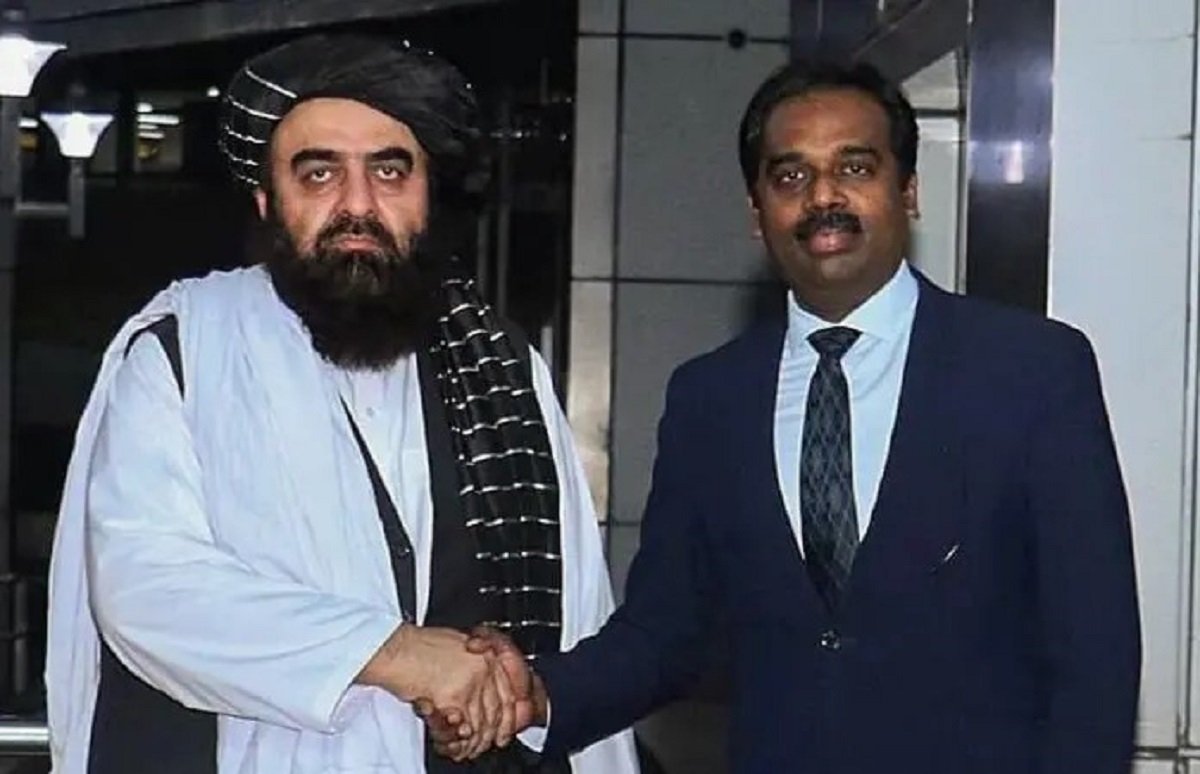
Contents
New Delhi, Oct.09,2025:The Amir Khan Muttaqi India visit has captured global attention — not just for its rarity, but for its symbolism. This is the first visit by a Taliban minister to India since the group retook power in Afghanistan in 2021–
Foreign Minister Amir Khan Muttaqi’s arrival in New Delhi signals a cautious but significant thaw in diplomatic engagement between India and Afghanistan’s Taliban-led administration. While India has yet to officially recognize the Taliban government, the visit suggests quiet backchannel diplomacy is already underway.
At the same time, Pakistan’s reaction has been intense, revealing the complex geopolitical fault lines emerging across South Asia.
A Historic Moment After Taliban’s 2021 Takeover
After the Taliban’s return to power in August 2021, most nations, including India, cut off direct ties, citing human rights violations, suppression of women’s education, and restrictions on freedom of speech.
However, the Amir Khan Muttaqi India visit marks a dramatic shift. It is not merely a diplomatic courtesy call — it is a strategic recalibration.
According to BBC News and Al Jazeera, Muttaqi’s trip was allowed after the UN Security Council Committee temporarily lifted his travel restrictions, signaling the international community’s openness to selective engagement with the Taliban leadership.
Pakistan’s Fiery Reaction to the Visit
In neighboring Pakistan, the Amir Khan Muttaqi India visit has stirred heated debates across media and political circles.
Pakistan’s Defence Minister Khawaja Asif, speaking on Samaa TV, called Afghanistan a “betraying neighbor” that “has never truly been Pakistan’s ally.”
He remarked-
“Afghanistan was the last country to recognize Pakistan. Even with shared religion and faith, it never treated us as a brotherly nation. Today, they stand closer to India than ever before.”
This statement reflects Pakistan’s deep frustration with Kabul’s growing proximity to New Delhi, particularly at a time when Pakistan itself faces rising terrorist attacks, political turmoil, and an ongoing refugee crisis linked to Afghan border tensions.
India’s Calculated Silence on Taliban Recognition
During a weekly press briefing last Friday, India’s Foreign Ministry spokesperson Randhir Jaiswal declined to answer a direct question about whether India would officially recognize the Taliban government.
This silence is telling. India is adopting what foreign policy analysts describe as a “watchful engagement strategy.”
Rather than granting formal recognition, India appears focused on protecting its developmental and security interests in Afghanistan, including its major projects like the Salma Dam and the Afghan Parliament building, which India funded before 2021.
Afghanistan Seeks Regional Balance
At a Moscow regional meeting just before his India visit, Amir Khan Muttaqi said:
“No terrorist organization operates on Afghan soil, nor does Afghanistan pose a threat to any neighboring country.”
Muttaqi emphasized that Afghanistan wants “balanced relations with all neighbors, including India.”
According to a report by The Express Tribune, Afghan officials believe that this visit demonstrates “Kabul’s intent to reestablish regional equilibrium” — a move away from its dependency on Pakistan and towards diversified diplomatic outreach.
Pakistan’s Internal Struggles and Security Warnings
Pakistan, meanwhile, is grappling with a surge in militant violence, much of it blamed on the Tehrik-e-Taliban Pakistan (TTP), a group Islamabad claims operates from Afghan territory.
In September 2025, Prime Minister Shehbaz Sharif issued a blunt warning to the Taliban:
“Afghanistan must choose between friendship with Pakistan or alliance with the TTP. There can be no middle ground.”
At the UN General Assembly, Pakistan’s envoy Aasim Iftikhar Ahmad accused Kabul of failing its international counter-terrorism commitments, calling Afghanistan “the single largest threat” to Pakistan’s national security.
Kabul has denied all accusations, terming them “baseless and politically motivated.”
What This Visit Really Means for South Asia
International experts see the Amir Khan Muttaqi India visit as part of a broader regional realignment.
Afghan foreign policy analyst Wahid Faqiri told TOLO News–
“Relations between the Taliban and Pakistan have grown tense. India sees an opportunity to engage Afghanistan diplomatically to secure its regional interests.”
Former Afghan diplomat Mohammad Azam Nooristani, now based in Germany, told Radio Liberty:
“India’s concern is clear — it wants to limit Pakistan’s influence and ensure Afghan soil isn’t used for anti-India activities.”
Afghanistan–India Relations- History, Hope, and Hesitation
Historically, India and Afghanistan have shared strong cultural and developmental ties. From Bollywood films to education programs, the connection has been long-standing.
Even during previous Taliban rule (1996–2001), India maintained informal contact through backchannels.
Now, the Amir Khan Muttaqi India visit could reopen those lines of communication. Yet, New Delhi remains cautious, balancing its humanitarian aid efforts with global concerns about women’s rights and extremism in Afghanistan.
Afghanistan–Pakistan Rift- Old Neighbors, New Fault Lines
The diplomatic gap between Afghanistan and Pakistan appears to be widening.
As Dawn News reported, Afghanistan accuses Pakistan of “collective punishment” over its mass deportation of Afghan refugees — many of whom have lived in Pakistan for decades.
In contrast, Pakistan argues it has “borne Afghanistan’s burden for too long” and now demands “respect, reciprocity, and responsibility.”
Editorials in The Express Tribune and Dawn highlight that this rift could redefine regional security architecture — with India potentially emerging as a stabilizing partner in Kabul’s evolving foreign policy.
How the World Views the Taliban’s Diplomatic Moves
Global reactions to the Amir Khan Muttaqi India visit are mixed.
While the UN, US, and European Union continue to pressure the Taliban on women’s education and human rights, they also acknowledge that total isolation is no longer viable.
The temporary lifting of Muttaqi’s travel ban shows that the world is cautiously engaging the Taliban for pragmatic reasons — including counterterrorism cooperation, drug control, and humanitarian aid delivery.
For India, engagement doesn’t mean endorsement — it means strategic vigilance.
Realignment or Risk
Diplomatic observers believe this visit could lead to limited, issue-based cooperation between India and the Taliban government.
Analyst Ghaus Janbaz told TOLO News–
“India’s goal is to ensure that Afghan soil is not used against it. Direct dialogue helps minimize miscommunication and regional hostility.”
However, experts also warn that the Taliban’s failure to deliver on its international promises — especially regarding girls’ education and counterterrorism — could undermine any long-term partnership.
A Turning Point for South Asian Diplomacy
The Amir Khan Muttaqi India visit is more than a diplomatic event — it’s a geopolitical statement.
It underscores Afghanistan’s shifting alliances, Pakistan’s eroding influence, and India’s quiet resurgence as a stabilizing power in South Asia.
Whether this engagement leads to lasting cooperation or renewed mistrust will depend on how both countries balance principle with pragmatism.

 Breaking News1 month ago
Breaking News1 month agoBalen Shah, Kathmandu’s independent mayor, from rapper to political leader. Explore his rise amidst Nepal’s youth-led revolution-

 Breaking News3 weeks ago
Breaking News3 weeks agoKanya Pujan 2025 Step-by-Step Rituals, Timings, and Powerful Benefits Explained-

 Breaking News4 weeks ago
Breaking News4 weeks agoShoaib Akhtar criticism, Pakistan vs India Asia Cup 2025-

 Breaking News3 weeks ago
Breaking News3 weeks agoJoganiya Mata history reveals her connection to the Hada dynasty, sacred legends, and evolving rituals at Chittorgarh’s revered temple-

 Breaking News3 weeks ago
Breaking News3 weeks agoCelebrate Chamunda Mata Ji Temple Navratri 2025 with nine days of spiritual devotion, cultural festivities-

 Breaking News1 month ago
Breaking News1 month agoPitru Paksha 2025-Seven Powerful Rituals and Sacred Places to Free Five Generations

 Breaking News3 weeks ago
Breaking News3 weeks agoAbhishek Sharma’s explosive 75 runs secured India’s spot in the Asia Cup 2025 Final- Will India face Pakistan or Bangladesh next-

 Breaking News1 month ago
Breaking News1 month agoMumbai Ganesh Visarjan Security is elevated with AI, drones, 10,000+ CCTVs, over 21,000 police personnel and






























